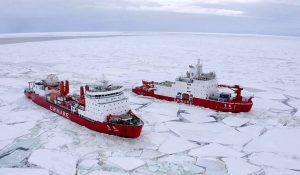 Two Chinese icebreaker research vessels and a cargo ship set sail last November 1st for the Antarctic with more than 460 personnel on board to help complete construction of China’s fifth Research Station on the world’s southernmost continent, which could be finished next year.
Two Chinese icebreaker research vessels and a cargo ship set sail last November 1st for the Antarctic with more than 460 personnel on board to help complete construction of China’s fifth Research Station on the world’s southernmost continent, which could be finished next year.
China’s biggest flotilla of research vessels deployed to the Antarctic will focus on building the station on the rocky, windswept Inexpressible Island near the Ross Sea, a deep Southern Ocean bay named after a 19th century British explorer.
Work on the first Chinese station in the Pacific sector, began in 2018. It will be used to conduct research on the region’s environment, state television reported.
The two icebreakers, Xuelong 1 and Xuelong 2, the name means “Snow Dragon” in Chinese, set sail from Shanghai with mostly personnel and logistics supplies on board.
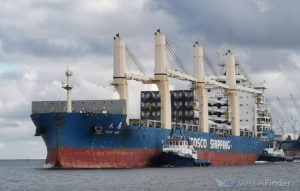 The cargo ship “Tianhui”, or “Divine Blessings”( TIAN HUI, General Cargo Ship – Details and current position – IMO 9774599 – VesselFinder) , taking construction material for the station, set off from the eastern port of Zhangjiagang.
The cargo ship “Tianhui”, or “Divine Blessings”( TIAN HUI, General Cargo Ship – Details and current position – IMO 9774599 – VesselFinder) , taking construction material for the station, set off from the eastern port of Zhangjiagang.
The five-month mission will include a survey on the impact of climate change.
The two icebreakers will also conduct environmental surveys in the Prydez Bay, the Astronaut Sea in southeast Antarctic, and in the Ross Sea and Amundsen Sea in the west.
This China’s mission to the Antarctic, will also cooperate with countries including the United States, Britain, and Russia on logistics supply, state media said.
Source: China’s Biggest Antarctic Fleet Sets Off To Build Fifth Research Station (ndtv.com)

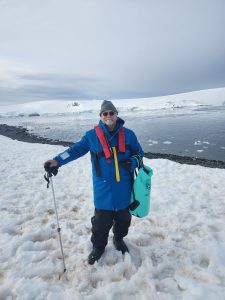 Don Conlee WX5DC is a professor at A&M Atmospheric Sciences in Texas.
Don Conlee WX5DC is a professor at A&M Atmospheric Sciences in Texas.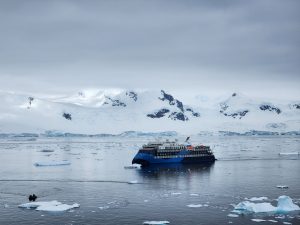 Don, along with class members, is actually on board of M/V Ocean Victory sailing to the South Shetland Islands/Antarctica .
Don, along with class members, is actually on board of M/V Ocean Victory sailing to the South Shetland Islands/Antarctica .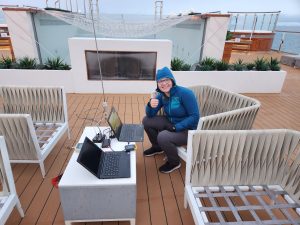 operate briefly before dinner and hopefully for the sweet spot of 0-3Z. Winds have died down and snow stopped, so fingers crossed-.
operate briefly before dinner and hopefully for the sweet spot of 0-3Z. Winds have died down and snow stopped, so fingers crossed-.  February 2024 marks the 21st edition of the Antarctic Activity Week (
February 2024 marks the 21st edition of the Antarctic Activity Week (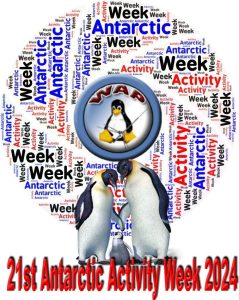 As known, the main purpose of the A.A.W. is to increase worldwide interest around Antarctic Continent and its related matters, with the aim of staying close to the researchers and personnel who are spending their time away from home and families, studying the Antarctic life and its secrets. Additional purpose is to share what Nations and Organizations are doing to protect this still non contaminated corner of the world, to share a message of peace WW.
As known, the main purpose of the A.A.W. is to increase worldwide interest around Antarctic Continent and its related matters, with the aim of staying close to the researchers and personnel who are spending their time away from home and families, studying the Antarctic life and its secrets. Additional purpose is to share what Nations and Organizations are doing to protect this still non contaminated corner of the world, to share a message of peace WW. The Captain Pieter J. Lenie Base (WAP USA-12) is an Antarctic summer base operated by the United States located at Copacabana Beach, Admiralty Bay (King George Island). About two kilometers northwest of this base, is the Polish Research Station Arctowski (WAP POL-Ø1).
The Captain Pieter J. Lenie Base (WAP USA-12) is an Antarctic summer base operated by the United States located at Copacabana Beach, Admiralty Bay (King George Island). About two kilometers northwest of this base, is the Polish Research Station Arctowski (WAP POL-Ø1). The new building of the Henryk Arctowski Polish Antarctic Station, will become operational in 2023. Two years earlier, as part of the tests, the structure will be assembled in Poland
The new building of the Henryk Arctowski Polish Antarctic Station, will become operational in 2023. Two years earlier, as part of the tests, the structure will be assembled in Poland
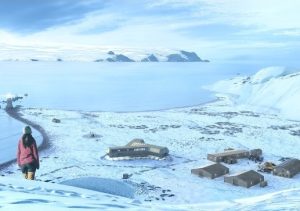 Ministry of Science announced that it would provide a designated purpose to modernize the station`s infrastructure and build a new main building. Its layout will resemble a three-pointed star. In the heart of the station there will be a common space where residents will spend time.
Ministry of Science announced that it would provide a designated purpose to modernize the station`s infrastructure and build a new main building. Its layout will resemble a three-pointed star. In the heart of the station there will be a common space where residents will spend time. The Islas Malvinas Refuge, originally Antonio Moro, is an Antarctic Refuge located at 200 m a.s.l. at 63°25′ South, 56°58′ West, at Nunatak Nobby, Tabarin Peninsula, Bahía Esperanza .
The Islas Malvinas Refuge, originally Antonio Moro, is an Antarctic Refuge located at 200 m a.s.l. at 63°25′ South, 56°58′ West, at Nunatak Nobby, Tabarin Peninsula, Bahía Esperanza .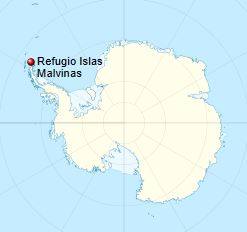 Refugio Islas Malvinas (WAP ARG-New) is one of the 18 shelters that are under the responsibility of the Esperanza base, which is responsible for maintenance and care. It is administered by the Argentine Army.
Refugio Islas Malvinas (WAP ARG-New) is one of the 18 shelters that are under the responsibility of the Esperanza base, which is responsible for maintenance and care. It is administered by the Argentine Army.